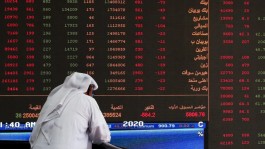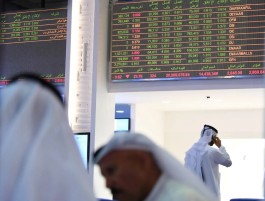Oil prices rose after recording their first weekly gains since late October, after a group of major shipping companies suspended the crossing of their ships in the Red Sea, highlighting the risks that threaten the vital artery of international crude trade.
The price of Brent crude (which is seen as a benchmark for the global market) exceeded the threshold of $77 per barrel after rising 0.9% last week, ending a series of declines that lasted seven weeks. While West Texas Intermediate crude approached $72 per barrel.
Egypt's Suez Canal Authority said it was closely monitoring tensions in the Red Sea, after the United States said it shot down 14 drones launched from areas controlled by the Iran-backed Houthi group in Yemen.
MSC Mediterranean Shipping and CMA CGM were the latest major shipping companies to join the list, which announced last weekend that they would not send their ships through the main ship crossing point in light of the increasing threats, while Maersk Tankers said. It is adamant that its ships avoid the sea lane for now. Houthi militants are attacking more commercial ships in the Red Sea every day - especially those they claim are linked to Israel - in response to the events of the war in Gaza.
Oil price movements
Crude oil prices have lost about a fifth from the highest level they recorded in late September, and have declined 10% since the beginning of 2023, affected by the increase in shale oil supplies in the United States, which exceeded analysts’ expectations, as well as doubts raised about the extent to which all members of the OPEC+ alliance adhere to their pledges to reduce oil prices. Production.
Although hedge funds' bullish expectations for oil have fallen to their lowest levels compared to data that began recording in 2011, Wall Street analysts believe that there is still a chance for prices to recover next year.
Goldman Sachs Group, which was previously among the biggest bullish bettors, reduced its forecast range for Brent crude prices in 2024 by $10 to a range of $70 to $90 per barrel in a report dated December 17, citing increased US supplies. While the average investment bank forecast for next year was about $81 for Brent crude and $77 for West Texas Intermediate.
Increase US oil supplies
Goldman analysts, including Dan Struyven, said in the report: The recent increase in US supplies reinforces the prevailing trend during 2023, which indicates that there is a lot of production expected from non-OPEC members. We expect some upside for futures as spot prices look lower given inventory volume and interest rate movements, investor positioning has declined, and easing financial conditions support our fundamental view that demand will grow strongly in 2024.
There are also still signs of decline in oil spreads, with Brent and WTI contracts in bearish contango (i.e. longer-dated contracts trading at premiums to their spot counterparts) until the middle of next year. The six-month Brent crude futures spread recently reached 21 cents per barrel in contango, compared to $1 per barrel in the opposite bullish backorder a month ago.




































